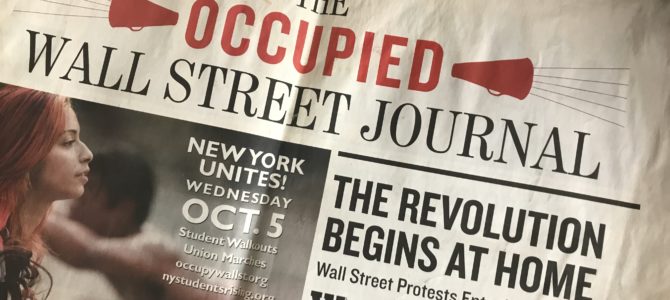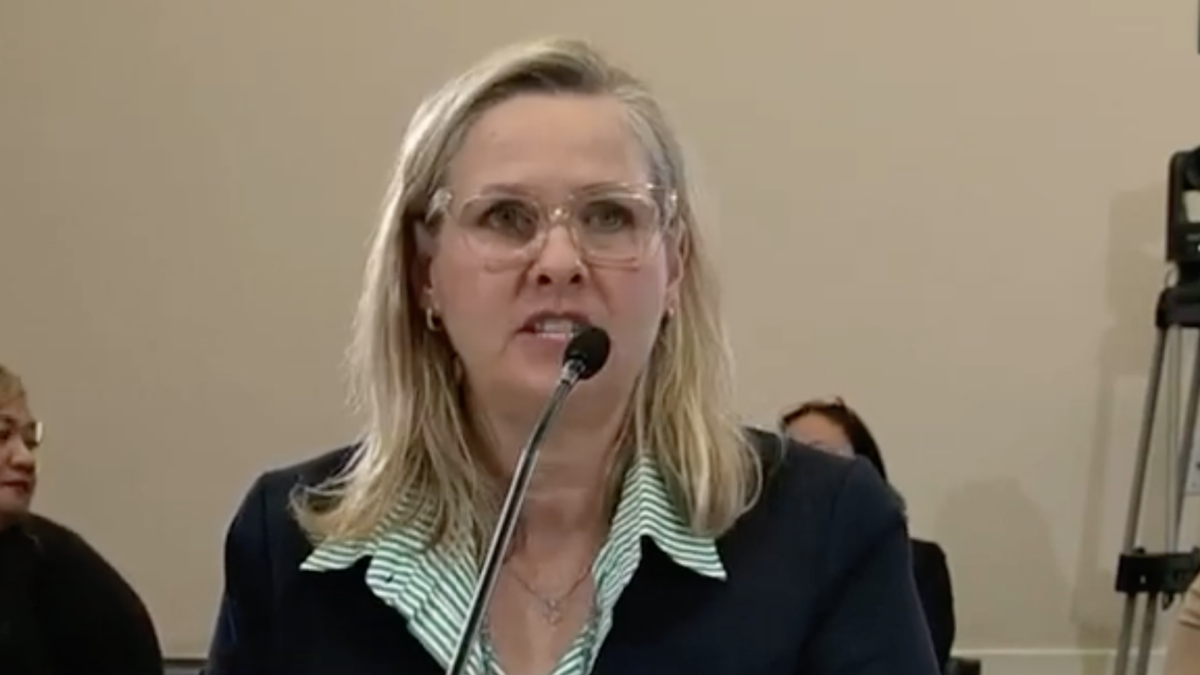
This is part one of a three-part series. Part two can be read here. Part three here.
The Occupation Will Be Televised
Over the past decade, a new and virulently illiberal progressive movement has taken shape in the United States. Centered around identity politics, control and censorship of speech, and proposed government takeovers of much of the economy, today’s New Progressive now sounds and looks almost identical to the radical fringe elements of leftism as recently as the late 1990s. Although the actual number of these New Progressives may be small, the movement has broad and approving reach in the media, and has become a disproportionally large part of the national political debate.
For conservatives it is essential to understand the origins and nature of this new progressivism. Although the cultural, economic, and political ideas that undergird this movement can be traced back to at the least the late 1960s and the emergence of European postmodern philosophy, in the American context, the most useful starting point for understanding what is happening today is Occupy Wall Street (OWS).
Occupy brought together three ideas for the first time that were formerly on the fringe. First is the idea that group identity bestows differing rights and obligations on individuals, rather than individuals all having equal rights and obligations. Second, OWS created the concept of a battle between the 99 percent and the 1 percent, which replaced a more nuanced approach on the left to how wealth is distributed. Finally, it offered a deep distrust of and desire to silence corporate entities that OWS claimed are not persons and therefore essentially have no rights.
Before delving into each, it useful to consider the backdrop and causes of Occupy Wall Street. On September 17, 2011, a group of protesters took over Zuccotti Park in lower Manhattan. The idea of the protest was first proposed by the Canadian progressive magazine Adbusters, and quickly gained the support of the Internet hacking organization Anonymous. From there, several other national and local progressive groups coordinated to create the occupation.
I spent a lot of time at Occupy Wall Street, first out of curiosity, then out of concern. Early on, there was a convivial feeling, a library was set up, and there was free food and music. The whole thing felt like an urban Woodstock. The message was “We are the 99 percent,” which placed blame on a small cabal of super rich and suggested that opposing and defeating them would be easy given vastly superior numbers.
In any political or social movement, the devil is in the details. So Occupy did what any good revolutionary group does: it created a governing body for itself, called the General Assembly. They came up with a kind of fascistic Quakerism — Quaker because it allowed all to speak and sought consensus, fascistic because it curtailed what speech could be made and placed the value of speech on the speakers’ racial, sexual, and other identifiers.
Intersectionality and the Progressive Stack
The primary element of the General Assembly that raised eyebrows for me was what they called the “progressive stack.” It was a set of rules that determined the order in which people would speak, giving those who went in the beginning a huge advantage in framing the discourse. Basically, the more oppressed groups you belonged to, the earlier in the session you would speak. A black lesbian would speak near the top; a straight, white man would wait a very long time to take the microphone.
At the time of OWS the concept of intersectionality was not yet widely well known, but among progressive activists, artists, and academics it was, and it lies at the root of the progressive stack. A hierarchy of oppression, which we now have become familiar with, was just beginning to establish a foothold in mainstream culture. The General Assembly was one of its first physical and non-hypothetical manifestations.
While Occupy sought to enhance the voices of the marginalized, they were remarkably non-diverse. One survey said 81 percent of participants were white, while only 7 percent were Hispanic, and less than 2 percent were black. This trend line holds to this day: polls show the vast majority of far-left Americans are white.
As was always likely, the General Assembly achieved little and struggled over time to effectively govern the little world it had created among the gleaming towers of Gotham. But by so publicly advocating for the rights of the identity group over the rights of the individual, they struck a major blow for intersectionality in leftist circles, a concept that would take over an increasing part of the cultural and media landscape.
We Are The 99 Percent
It should not surprise us that the credited creators of Occupy Wall Street were primarily interested and involved in advertising. Its symbol, a graceful ballerina poised atop the Wall Street bull statue, was a stroke of marketing genius worthy of a midtown ad agency.
In creating slogans and messaging, the movement was wildly successful. They couched a radical agenda in terms that seemed simple and sensical. Why, after all, should 1 percent of human beings control so much more wealth than the other 99 percent? Thus, “We are the 99 percent” became a powerful and successful rallying cry.
The idea of income inequality was a relatively new one in 2011, at least in terms of the widespread public imagination. Throughout the 1990s and the first decade of the 21st century, liberals and Democrats focused their messaging energy on a shrinking middle class. While American progressivism has always had a soak-the-rich element, it was generally bounded in the idea of creating greater opportunity, not such direct Marxist calls for class warfare.
Occupy brought Marxism and socialism a kind of respectability that it had not enjoyed before in the United States, at least not among the creators of our news and culture. Although Occupy did not achieve any of its specific policy goals, to the extent they had any, it did take the stigma out of socialism in the media. It is worth remembering that the young occupiers in 2011, in their early 20s, had no memory of the Soviet Union or the Cold War. For them a direct attack on the capitalist class taken basically out of the Communist Manifesto did not carry the dark images of communism’s past.
Just as many of the occupiers were in their 20s, so were many of the journalists covering the occupation. Language about class warfare and attacking the rich had to be couched in niceties about the virtue and victory of capitalism when spoken of in the 20th century. Occupy Wall Street changed that. Marxist rhetoric clothed as concern over income inequality became not only acceptable outside of the pages of leftist magazines, it became quite fashionable.
Corporations Are Not People
Occupy Wall Street took place about a year after the Supreme Court decided the Citizens United case. In that case the court confirmed that corporations have a First Amendment right to engage in political speech. This was not a new concept in American jurisprudence — in fact it goes back to the earliest days of the republic — but this decision outraged and sparked the left’s imagination. It was a perfect fit for Occupy’s platform.
What made it so perfect was that corporations could be portrayed as the means by which the 1 percent exerts control over the rest of us. Fresh off scandals that helped lead to the great recession, corporations were vulnerable and easy targets for rhetorical abuse. Just like “We are the 99 percent,” “Corporations are not people” is a great slogan that almost sounds axiomatic. But, of course, corporations are people — it’s not like there are bunch of ducks owning shares or sitting in boardrooms.
It very quickly becomes a bait and switch situation. Asked if super PACs should be able to spend unlimited money on political ads, a lot of people will say no. Asked if theater companies or movie studios should have their political content limited by the government, most people would also say no. But both are corporations.
One of the Occupy flags was an American flag but instead of stars it had corporate logos, like those of McDonalds and Exxon. The idea was make the term corporation seem only to apply to these giants, when in fact the vast majority of corporations are small entities, made of small groups of people who don’t check their constitutional rights at the door when they cooperate.
Citizens United and the fight over corporate personhood provided Occupy a perfect foil for their effort to weaken First Amendment protections and the idea of free speech itself. The attack on corporate speech was an early iteration of what would grow into the censorious deplatforming culture on the far left. It’s an early form of the idea that some speech, in fact quite a bit of speech, is so dangerous that it must be shouted down and stopped at any cost.
“I abhor your views but defend your right to speak them” went out the window. Leftists came to take the narrowest view possible of free speech, arguing that it only applies to actions the state takes to limit speech. But of course freedom of speech is not just a constitutional protection, it is, at least for most conservatives, a good in and unto itself. For progressives, this was starting to no longer be the case.
By the end of the Occupy experiment, things got ugly. Since early on, the encampment had been divided between the West side, where the library and General Assembly were, and where the intellectuals of the movement congregated, and the East side, where drum circles were peopled by anarchists and scumpunks. Tensions were already high when reports of rape started to surface.
At first, OWS insisted they could handle the rape problem, even erecting a safe tent for women. But for the authorities in New York City, including an increasingly frustrated Mayor Michael Bloomberg, that was not at all an acceptable remedy. It became clear that the occupation’s days were numbered, and then on November 15, the New York Police Department shut it down.
By most measures at the time, Occupy Wall Street was a failure. In the political short term, seven years later, even with the loss of the House of Representatives, conservatives hold historic levels of political and judicial power. While Occupy organizations still exist, they are a bit player, dwarfed by movements like the Women’s March. But it is almost certain that without Occupy Wall Street, there would have been no Women’s March, at least not in the intersectional progressive form we see today.
Occupy created an agenda, which would ultimately flower into the platform and policies of organizations like Justice Democrats with their cadre of socialist congresswomen. But it wouldn’t happen overnight. In part two, we will examine the new progressive movement’s incubation period under the last four years of the Obama administration. During that time, out of the ashes of Occupy, something was starting to grow.








